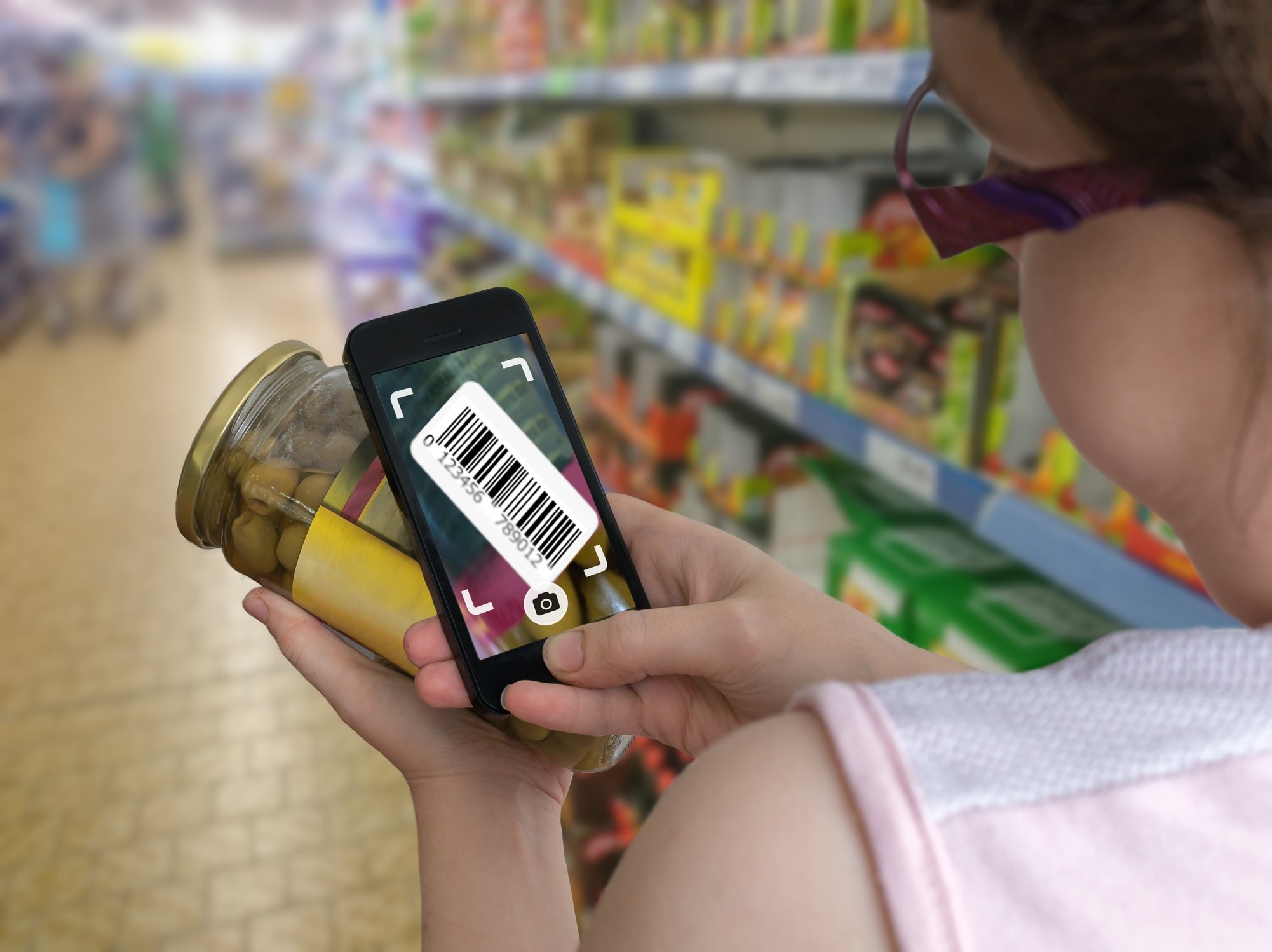BPA used in packaging: Damaging for human health and to be banned by the EU?
18th July, 2019
What is the meaning of BPA, and how does it affect my coding?
Bisphenol A commonly known as BPA, is an organic synthetic compound which has been traditionally used in the manufacturing of plastic; creating a tough, clear plastic that has been popular in the in the packaging industry.
It is one of the most popular chemicals in the world, manufactured in vast quantities with an estimated 3.63 billion kilos created in 2016.

BPA is used in the UK in thermal paper, CD cases, toys, medical devices and printer paper, and is used to coat the inside of many containers that are used to store food. For example BPA is used in many metal cans, bottle tops and until recently baby bottles.
This can then seep into your food and drink, with the health effects of this strongly disputed by scientists, with some saying it is harmless whilst others linking BPA to a number of diseases and cancers.
The history of Bisphenol A - BPA
BPA was first discovered by Russian Chemist Aleksandr Dianin in 1891. Little was done with the chemical until workers at a German pharmaceutical company discovered that it could be combined with epichlorohydrin in 1934. This led to further discoveries in the 50s that it could be used to create polycarbonate plastics a strong lightweight, shatter-proof, durable, heat resistant and cheap plastic.
It was also discovered that BPA could be used to create an epoxy resin that prevents food from spoiling for over two years.
BPA became widely used across industries, reducing the price of BPA significantly over the next two decades, further encouraging its adoption in the UK and globally.
It has gone on to be used in cans to stop them from rusting, harden plastic and ultimately keep bacteria from contaminating food. It therefore has traditionally had a large role in food packaging, for example 80% of metal cans were lined with BPA pre-2018, which has been controversial due to its similarities to oestrogen, first uncovered by British Chemist Charles Dodd in the 1930s.
New EU BPA regulations banning the use of BPA in food packaging and thermal paper
Since January 2020 the EU has enforced a ban on BPA in thermal paper, limiting BPA to 0.02% of weight, effectively banning BPA in thermal paper.
Both the European Chemicals Agency (ECHA) and European Food Safety Authority (EFSA) agree that there is evidence that BPA has endocrine disrupting properties which led to the decision to strictly limit its use in food contact areas such as food and drink packaging.
This led the EU to ban the use of BPA in baby bottles back in 2011, and it has recently extended that ban to further items.

In 2017 the EU member countries unanimously decided to classify BPA as a substance of very high concern due to the potential health impact and “probable serious effects to human health”.
Following this decision in February 2018 the EU decided to limit “bisphenol A in varnishes and coatings intended to come into contact with food and in regards to the use of that substance in plastic food contact”. This is now limited to a maximum of 0.05 mg of BPA per kilo of food allowed to transmit from the packaging into the food.

The EU is awaiting results from a BPA study in America and further advice from ESHA, before making a further decision on whether to remove BPA from food packaging all together. This decision should be adapted in early 2020.
Considering the popularity of BPA and its wide use this will have a significant impact on retailers, customers and packagers, with some expecting significant price increases.
What are the effects of BPA on health?
The health implications are not fully understood with scientist debating the impact of it. Some scientists and campaign groups argue that it has no impact on human health whereas others say BPA affects hormones can lead to cancer and other diseases. A recent study found that BPA levels in humans have been severely underestimated, due to inaccurate measuring of the chemical and in reality it is 44 times more common than previously thought.
It is argued that toddlers and young children are particularly susceptible to the impact of BPA, which has led to it being banned in baby bottles in 2011.

Chemicals such as BPA, that mimic oestrogen are called Xenoestrogens and have only been around for 70 years. Given the relatively short timeframe it is hard to know what the long-term effects on humans are, for example the impact that it may have on genetics passed on through reproduction.
Some scientists have linked BPA to a range of diseases such as heart disease and breast cancer and have been calling for it to be removed from goods and packaging for many years.
This has led to the EU banning BPA in thermal papers / labels (used for direct thermal printing) and some food packaging from 2020, which will have a large impact on packagers.
However Plastics Europe has criticised the decision and filed a lawsuit against the ECHA for applying “inconsistent and unforeseeable criteria to assess the endocrine-disrupting properties” of BPA in 2017.
In the meantime, consumers worried about the potential health effects of BPA can protect themselves; by not buying food in BPA packaging, replacing tinned food with fresh or frozen foods and avoiding heating up food in containers that include BPA as heating increases the amount of BPA that leaks from packaging into food.
BPA is also very harmful for the environment with over a million tonnes of the chemical released each year into the environment. This has been shown to affect the reproductive rates of fish for up to three generations, and BPA has also been linked to autism in mice by some studies.
What do the new BPA regulations mean for UK packagers?
Following much of the negative press and upcoming legislation many manufacturers are rushing to replace BPA.
This will cause significant upheaval to the packaging industry as one of the most widely used chemicals worldwide looks set to be replaced.
As of February 2018 80% of metal cans were lined with BPA demonstrating the enormity of the task to go completely BPA free.
EU laws which came into law at the beginning of 2020 will require all thermal papers containing BPA to have been used by the end of the 2019 as it is banned from 2020 onwards. These thermal papers are used in direct thermal transfer as the paper that changes colour when exposed to heat from the printhead.
Traditional thermal paper looks set to be replaced with BPA free thermal paper, which uses a phenol free chemical called BPS that is also proving to be controversial.
Packagers also have the option to replace their direct thermal printers with thermal transfer printers that do not use BPA or BPS as the printers print onto ribbon (which does not contain BPA or BPS) which is then transferred onto the product.
If packagers remain with direct thermal, switching from BPA thermal paper to BPS, it is expected to cause an increase in costs for packagers of an estimated 5% as the new materials are more expensive to source.
BPA free thermal alternatives
One solution for packagers is to replace the thermal papers with BPA free thermal paper which uses a similar chemical called BPS. This has many similar properties, however the safeness of this chemical has also been called into question.
Whilst the EU wanted even more stringent regulations banning BPA, they accepted further research is needed into its potential replacements on their safety and effectiveness before BPA can be completely replaced.
Although BPS is phenol free unlike BPA, research on rats has shown that when exposed to low levels of BPS it affected their oestrogen hormone similarly to BPA.

This led the European Parliamnt in 2016 to state that “alternatives (to BPA) should not include bisphenol S (BPS) as a substitute for BPA, as BPS may have a toxicological profile similar to BPA.”
However given the nature of thermal paper it may be tricky to find a replacement that can be as effective as BPA or BPS. Therefore packagers could potentially look to other alternatives such as thermal transfer which does not use thermal paper and consequently does not include any BPA or BPS, so is not a risk of being outlawed in the future.
BPA has been one of the primary chemicals which makes thermal labels / paper work, and has been banned from January 2020. If manufacturers do not want to switch to BPS which also has potential health impacts, then there’s is the option to change to thermal transfer which does not use either BPA or BPS. If you need any advice or have any applications that you are unsure how will be impacted please email us on enquiries@uk.interactivecoding.com or give us a call: 01159 640144.
Related
Smart Labels in the Food Industry: Applications and Benefits

More Resources

